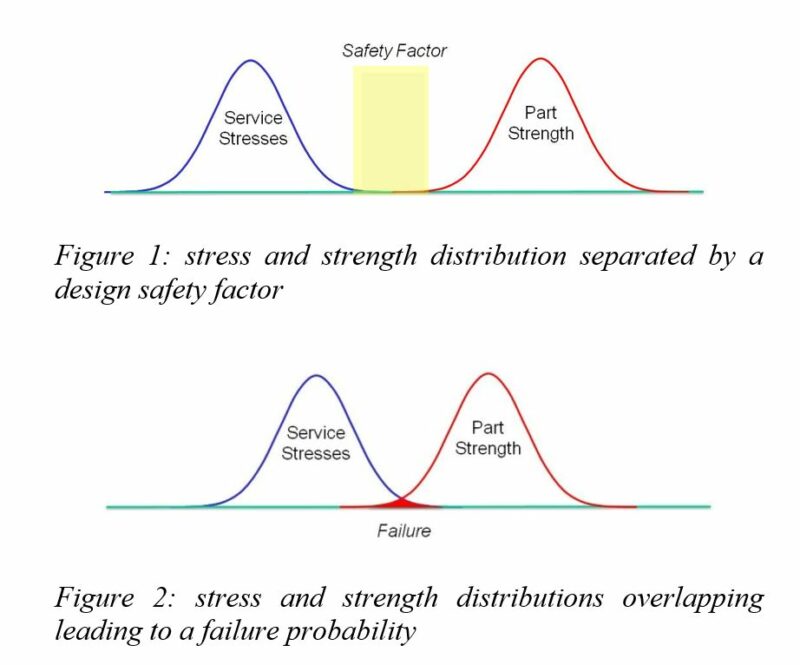This paper was originally published and presented at The Society of Plastics Engineers’ ANTEC in 2013.
When a plastic part fails, a tough question is often asked, “Why are a limited number of parts failing?”. This is particularly true with seemingly random failures at significant, but low, failure rates. Two aspects are generally linked to such low failure rates, multiple factor concurrency and the statistical nature of plastic failures. Failure often only takes place when two or more factors take effect concurrently. Absent one of these factors, failure will not occur. Plastic resins and the associated forming processes produce parts with a statistical distribution of performance properties, such as strength and ductility. Likewise, environmental conditions, including stress and temperature, to which the resin is exposed through its life cycle is also a statistical distribution. Failure occurs when a portion of the distribution of stress on the parts exceeds a portion of the distribution of strength of the parts. This paper will review how the combination of multiple factor concurrency and the inherent statistical nature of plastic materials can result in seemingly random failures.
Failure within a plastic part can be defined in several ways. A useful definition for the purpose of understanding failure is an undesirable event or condition that results in the inability of a component to function properly or perform its intended function safely, reliably, and economically. In many cases, failure is catastrophic and results in a component that is completely inoperable. In other cases, however, the part may be partially operable, but not fully functional; or simply may be compromised to the point that it is deemed that further use is unreliable or unsafe.
Failure within plastic components can take many forms, including:
- Deformation / Distortion
- Esthetic Alteration
- Degradation
- Wear
- Fracture
This paper focuses on failure through fracture in illustrating the role of multiple factors in plastic part performance and the statistical nature of plastic part failure. However, it is important to note that the same principles apply to the other types of failure as well.

The cause of failure in plastic parts is not typically trivial. Parts can fail as the result of various factors concurrently reducing the expected strength and/or increasing the expected in-service stresses of the part. The number of factors affecting part performance produces a broad statistical distribution of the material properties and service conditions. The overlap of these two statistical distributions leads to sporadic and seemingly random failures. When working to identify the cause of component failure, it is important to consider the interaction between the various factors and the inherent statistical distribution of the performance and service conditions.
Paper authored by Jeffrey A. Jansen and Antoine Rios, Ph.D.
